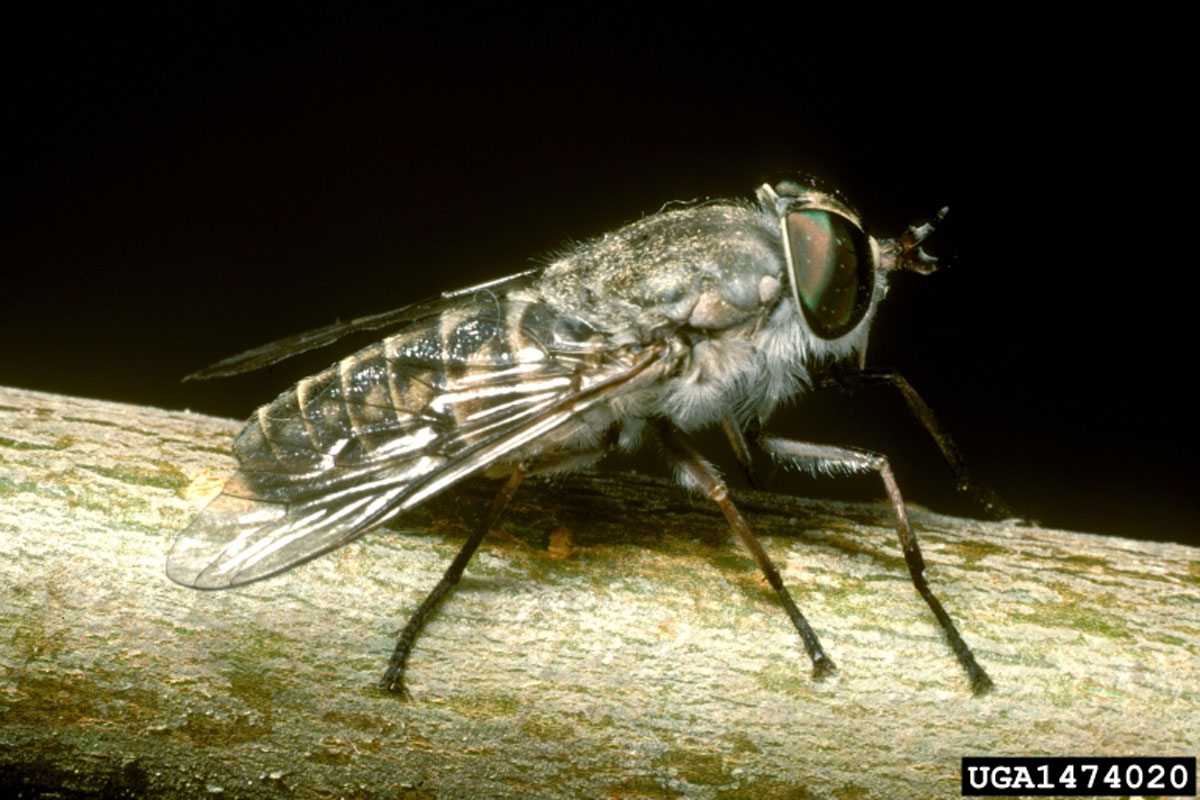
Horseflies are a nuisance and can spread disease; fly traps on horse farms can help.
Fly traps for the horse farm can be very appealing, especially when the little buggers won’t quit pestering you or your horses. Sticky fly tape, UV attractors with sticky pads, commercial fly traps and bug zappers can help you annihilate flies around the horse farm.
Manufacturers design most traps specifically to attract certain fly species and those that use smelly bait particularly target houseflies. In contrast, stable flies home in on a horse’s physical shape and odor and are best caught with traps specific to them—visual cues rather than smelly bait as attractants.
Commercial Fly Traps
One commercial nonchemical flytrap is called the Epps Biting Fly Trap (Horseline Products) that is “engineered to exploit the behavior of biting flies.” The trap resembles the shape of a horse and as the fly approaches its prey by circling over or under the pseudo-horse’s form, it is forced into a bin full of soapy water. Soap alters the water’s surface tension so the fly cannot extricate itself. The manufacturer claims that one trap can control flies on 20 acres and kill a pound of flies daily. It is reported to target stable flies, but also deer flies, horseflies and other biting flies.
Another biting fly trap—Starbar Fly Terminator Pro (Farnam)—is a gallon jug that can trap up to 35,000 flies using a scent attractant.
Some commercial fly traps use poison, such as imidacloprid, in a sugar base (QuikBayt by Bayer). Insecticidal chemicals kill other invertebrates such as predator wasps, bees and ladybugs and are toxic to children, pets and chickens, for example.
You need to use fly traps as an adjunct to insect control; not as the primary strategy. They work best if you locate them throughout your horse property, at no more than 50-100 foot intervals. Most fly traps work best when placed low to the ground, less than four feet high.
Homemade Fly Traps for Horse Farms
Placing multiple fly traps around the property could get expensive. One simple, cost-effective way to help control flies on your farm, is making a homemade fly trap. Here’s what you need:
- A 2-liter empty plastic bottle or juice jug
- Scissors or mat knife
- String
- Bait—rotting fruit or vegetables, sugar water, honey, horse manure
- A bit of soapy water
Cut the bottle in two, making the cut about one-fourth to one-third of the way down from the top so that the bottom part is longer than the top. You can discard the cap or cut a large fly-sized hole in it and leave it on. Place the bait and a couple of inches of soapy water in the bottom of the bottle. Turn the top section of the bottle upside down and insert into the bottom portion. Tape the two pieces together and, lo and behold, you have a perfect fly trap. Punch a couple of holes into the top of the unit, add a string, and it’s ready to hang in a sunny spot, low to the ground. Locate the trap close to fly breeding sites rather than in areas you’d rather they not come.
The flies fly into the funnel to the bait but can’t find a way back out, generally falling into the water in their attempts. Once full and/or too smelly to be tolerated, discard that container and begin anew.


